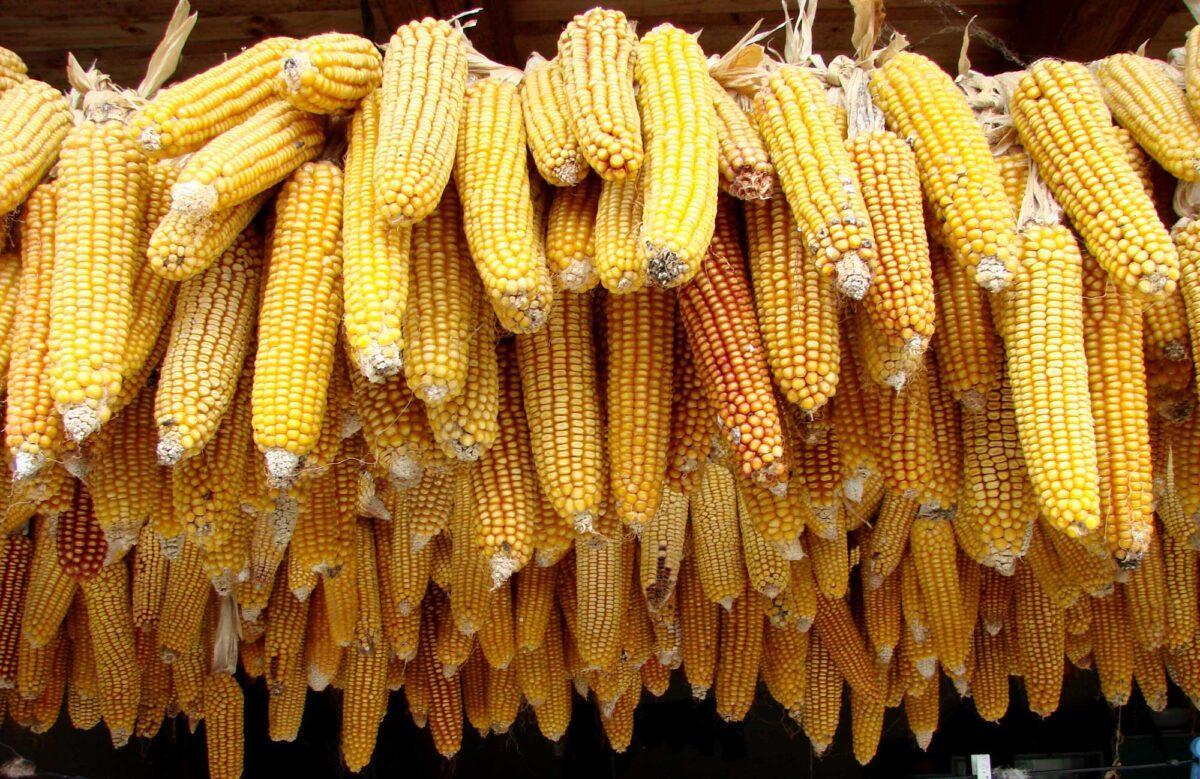Africa-Press – Eswatini. Over 280 000 emaSwati, who are already food insecure, will continue languishing in hunger as the dryer and hotter-than-usual El Nino-induced weather sharply dented maize harvest prospects across Eswatini’s main maize growing regions.
This has raised risks for higher food-price inflation. According to the latest Integrated Food Security Phase Classification (IPC) analysis, about 238 500 people are faced with acute food insecurity (IPC Phase 3 [Crisis] and above) between June and September 2023. The number of food insecure people is said to have increased to nearly 283 000 between October 2023 and March 2024, moderately higher than projections in the corresponding period of 2022/23. The anticipated year‐on‐year increase in acute food insecurity is underpinned by the reduced maize harvest and high food prices, while a slow economic recovery from the pandemic, causing income losses, is further constraining households’ economic access to food.
Projected
With the projected acute decline in grain harvests in Eswatini and other main grain-producing countries in southern Africa, the price of white and yellow maize is expected to soar further to record levels, exacerbating the persisting cost of living crisis. According to the Director of Agriculture, Nelson Mavuso, inadequate rains in some of the country’s key producing areas – Mahlangatsha, Sitsatsaweni, Sigombeni, Ntfonjeni, Dlangeni, Sigangeni will result in a decline in the harvest, affecting the food security position of Eswatini. “The drought from the El Nino weather pattern has withered leaves, wilted cobs and raised the spectre of hunger for thousands of farmers and emaSwati, especially the vulnerable groups, the elderly and those with disabilities,” Mavuso said.
Produce
In Mavuso’s observation, the kingdom will produce far less than the 85 000 tonnes it got in the 2023 harvesting year, about 15 per cent below the previous five-year average. This means Eswatini will be 55 000 tonnes short to meet the national demand of 140 000 metric tonnes annually. The low yields in 2023 were primarily caused by the erratic temporary distribution of rainfall, despite cumulative seasonal rainfall amounts being close to normal levels. Mavuso went on to say that the Ministry of Agriculture is currently consolidating data of the pre-vulnerability assessment which will show the overall maize yield in the country. “By next week, we will be having the report for review and we will release it later on.” Observably, the significantly below-average harvests are experienced across the region, which is expected to negatively impact food access, and crop sales through the post-harvest period.
According to the latest global cereal supply and demand brief, inadequate rains in the region’s key producing countries, South Africa, Zambia and Zimbabwe will result in a decline in the harvest, affecting the food security position of the region. In South Africa, recent rainfall deficits have sharply dented yield prospects and the country’s 2024 maize output is forecast to drop to a near-average level below earlier expectations. Dry weather conditions are affecting neighbouring countries and have supply-curtailed 2024 maize production prospects,” FAO said in its latest brief. The FAO cereal supply and demand brief provides an up-to-date perspective of the world cereal market. “Other SADC countries which also produce some grain such as Botswana, Lesotho, Namibia and Eswatini are also battling the drought,” FAO said.
South Africa’s Crop Estimates Committee says the summer grains and oilseed harvest will be around 17.4 million tonnes, down 13 per cent on 2023 figures. The committee also notes that Zimbabwe’s main maize grain harvest is expected to fall significantly to 1.1 million tonnes in 2024 from a high of 2.8 million tonnes projected for the 2023-2024 farming season due to an El Nino-induced drought.
Risks
Wandile Sihlobo, Chief Economist at the Agricultural Business Chamber of South Africa told the Times: “The major risks to consumer food inflation in Southern Africa in 2024 will primarily be white maize products.” He added: “We see upside risks in maize prices and grain products in the consumer food inflation basket.” Strikingly, most countries in the region have already flagged sharp grain deficits which are threatening the region’s food security. Malawi, Zambia and Zimbabwe have declared that Zimbabwe needs about 1.8 million tonnes of maize, a year for human consumption and another amount for livestock. Zimbabwe’s monthly consumption rate is 23 000 tonnes and as of November 2023, the government said the available grain would last around 10 months. Malawi, Zambia and Zimbabwe are the three major maize grain producers, which had declared the drought a national disaster and emergency. Zambia reported that it has lost nearly one million hectares of maize to the current drought. Malawi followed suit, also declaring a state of disaster over drought in 23 of its 28 districts and the President Lazarus Chakwera saying it urgently needs more than US$200 million (E3.7 billion) in humanitarian assistance.
According to the United Nations, more than 13 million people across southern Africa can’t put enough food on the table and the number is expected to surge in the coming months as the result of months of poor rains kicked in. The National Maize Cooperation (NMC) Chief Executive Officer (CEO) Mavela Vilane corroborated with the views of the other agricultural experts, saying he expects the below-average precipitation and high temperatures experienced throughout southern Africa to weigh significantly on agricultural production in the region, exacerbating food security challenges.”
The NMC CEO went on to say that the dry and hot conditions, driven by El Niño, are, therefore, currently affecting the crucial growing season for crops in the SADC region. “As a result, we expect that white maize and other dryland crop yields will decline drastically and we anticipate that most countries in the region will appeal for international assistance to counteract increased food insecurity and the effects of El Niño,” he said. Given the fact that already, it has been projected that maize production in two of the largest maize producers in the region, Zambia and South Africa, will fall in 2024/25, by 41.8 per cent year-on-year and 9.1 per cent year-on-year respectively, Vilane is of the view that these two large grain producers will decrease if not ban exports as a means of building their own buffers stocks to ensure they have enough white maize until the next harvest is ready.
Inflation
“This will then drive up food inflation in the region and Eswatini in particular since we are currently importing over 61 per cent of our white maize demand from neighbouring South Africa,” the CEO said. Vilane went on to state that should South Africa decide to decrease exports, Eswatini might see itself having to source maize further up north, ‘and this will result in the cost of bringing maize and other grains (beans in particular) going extremely high resulting in high food prices in the country’. Additionally, Vilane says the situation equally applied to other dryland grains like yellow maize, soybeans and sorghum, some of which are used in the production of animal feed and cooking oil, etc. “So one needs not only must look at the situation as only affecting white maize but the entire food chain. We must brace ourselves for a very tough year ahead,” Vilakati stressed.
Maize
Currently, 50kg of white maize costs about E302 and E420 for 70kg and these prices are expected to skyrocket in the short to medium-term. Economists believe that the imminent maize shortage will compound hyperinflation and other pre-existing economic troubles in a country with 229 000 (19.2 per cent) multidimensionally poor, according to the UNDP Multidimensional Poverty Index 2023. A Multidimensional Poverty Measure is an index that measures the percentage of households in a country deprived of along three dimensions –monetary poverty, education, and basic infrastructure services – to capture a more complete picture of poverty.
Source: times
For More News And Analysis About Eswatini Follow Africa-Press







